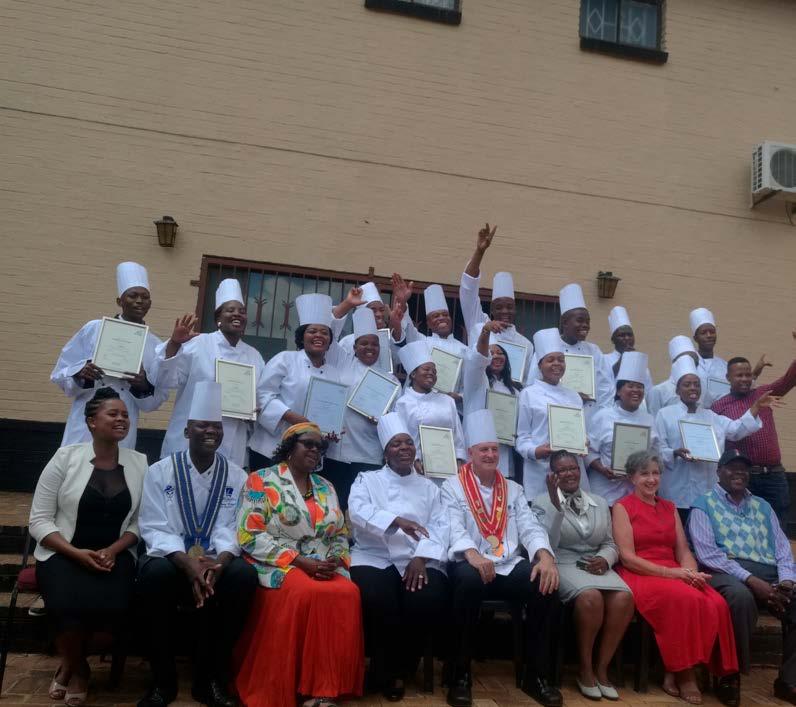RESPONSIBLE DRINKING
W O N K O T D E E N U O Y WHAT S T I N U L O H O C L A ABOUT Alcohol content is also expressed as a percentage of the whole drink. Look on a can of beer or a bottle of wine and you’ll see a percentage, followed by the abbreviation ‘ALC/ VOL’ (alcohol by volume). Wine that says ‘13 ABV’ on its label contains 13% pure alcohol.
Tips for responsible consumption:
T
he South African government defines moderate alcohol consumption as no more than two standard drinks, 340 ml or a half quart of beer per day for women, and no more than three standard drinks per day for men. Standard drinks measures vary from country to country, but in South Africa, a standard drink contains 12 grams of pure alcohol. It is recommended that women and men should not regularly exceed 14 units of alcohol per week, and that this consumption should be spread evenly across the week. The legal limit for driving after drinking in South Africa is a breath alcohol content of 0.24 mg per 1 000 ml, or a blood alcohol limit of 0.05 g per 100 ml. The rule of thumb for consuming alcohol if you are planning to drive afterwards is a maximum of one unit of alcohol (10 ml of pure alcohol) per hour, based on an adult weighing 68 kg, as this is what an average adult’s body can process. Be aware that if you weigh less than 68 kg, your body will need more time to process the same amount of alcohol. Units are a way to tell how strong your drink is.
What does one unit represent? • It is equal to two thirds of a beer or spirit cooler with a 5% alcohol content. • For those who drink wine, 75 ml of red or white wine per hour with an alcohol content of 12% to 14% is acceptable. • Spirit drinkers can consume up to one 25 ml tot of alcohol per hour.
• If you drink beer or wine at home, pour small amounts into your glass. • If you fill your glass to the rim, you’ll drink more than you realise. Opt for a smaller glass. • Measure your spirits instead of free-pouring them. The Drinkaware unit measure cup is an ideal way to measure spirits, as well as wine and beer. • Try and pour your own drinks. If your partner or host is constantly topping up your half-filled glass, it’s hard to keep track of how much alcohol you are drinking. • Try tracking your alcohol consumption each day using the Drinkaware alcohol tracker. • Drink spritzers if you like wine, or try a shandy if you’re a lager drinker. You will be consuming the same amount of liquid, but one that contains less alcohol. • Opt for half litres if you prefer higher-strength lager, or try a lower-strength drink option. You really won’t notice the difference. • Alternate alcoholic drinks with soft drinks, water or noalcohol beers (beers with a less than 0.05 ABV). • Ask questions. If you’re still uncertain about how much you’re drinking, ask the bar staff. Do they pour doubles or singles? How big is their large glass of beer/wine? Alcohol significantly slows reaction time and distorts your vision, and the effects of a heavy night of drinking could well affect your driving ability the next morning, and you may still even be over the legal limit,” says Nirishi Trikamjee, SAB Corporate Affairs director. Any quick-fix solutions to sober up, such as drinking coffee, taking a cold shower or drinking a litre of water before driving are myths. “Once the alcohol is in your system, your liver is going to need time to process it, and restricting yourself to only one unit per hour is the only way to stay sober in the eyes of the law.
Line your stomach The idea behind eating a meal before having a few drinks has to do with the fact that alcohol is mostly absorbed once it reaches the small intestine, rather than in the stomach. If your stomach is full of food, alcohol takes longer to get into your system. Scientific studies have shown that eating food before you drink results in your blood alcohol level peaking at a lower value, meaning that you feel the effects of the alcohol to a lesser extent. www.spotongmag.co.za
17


























